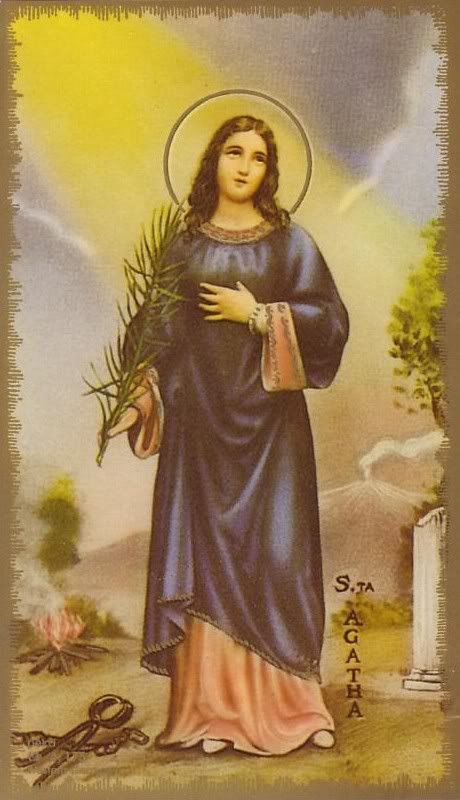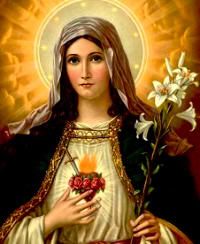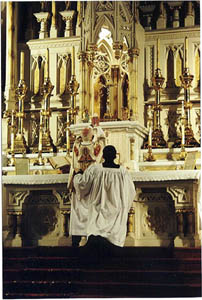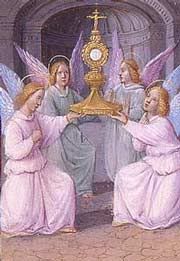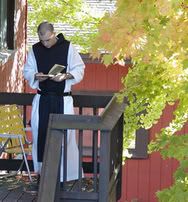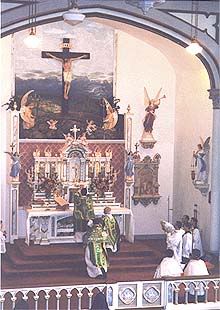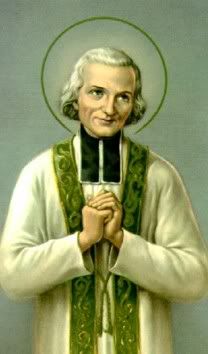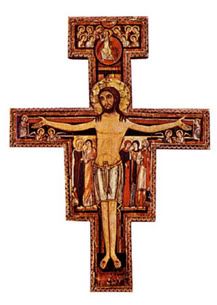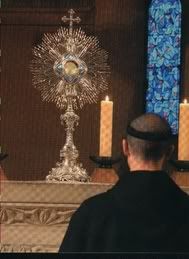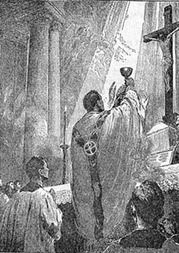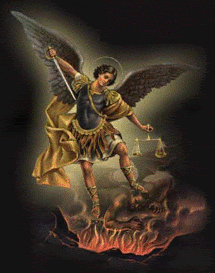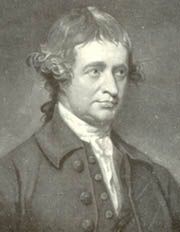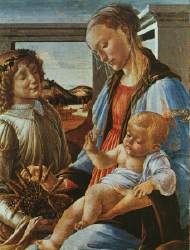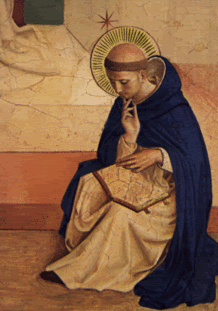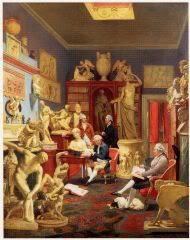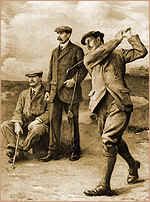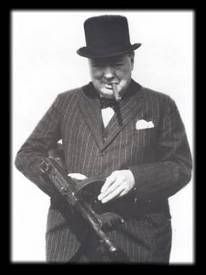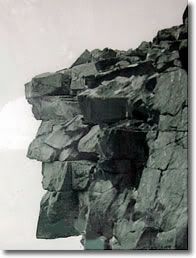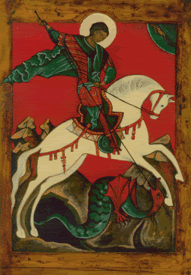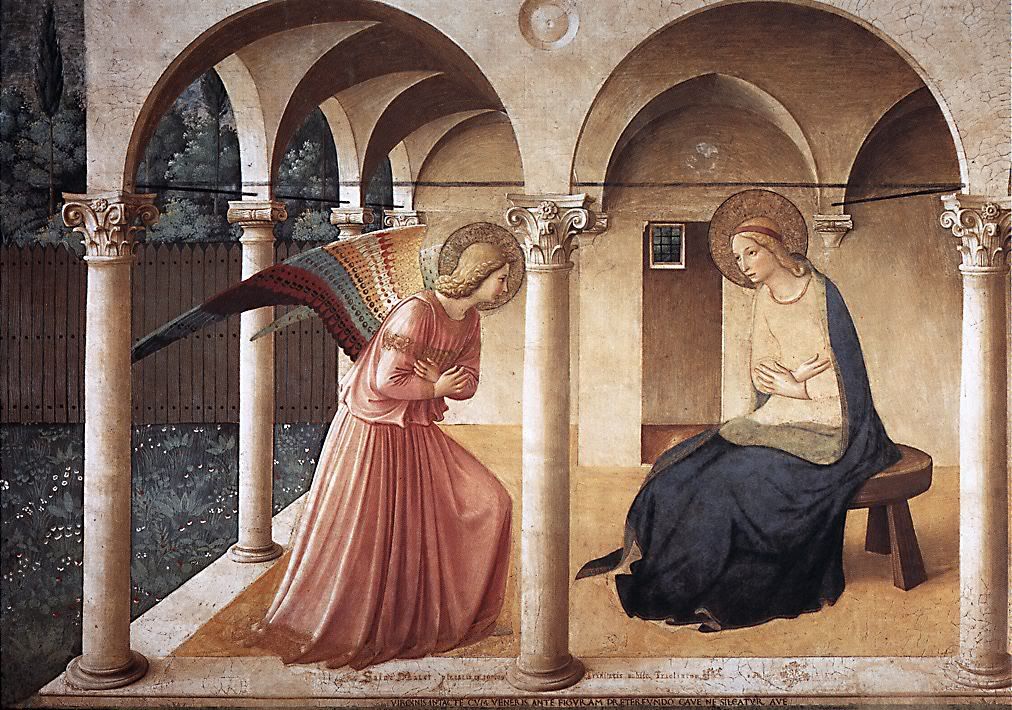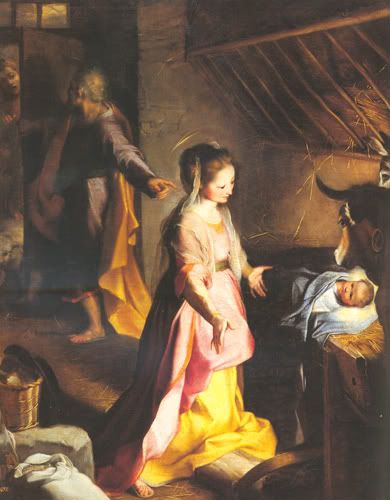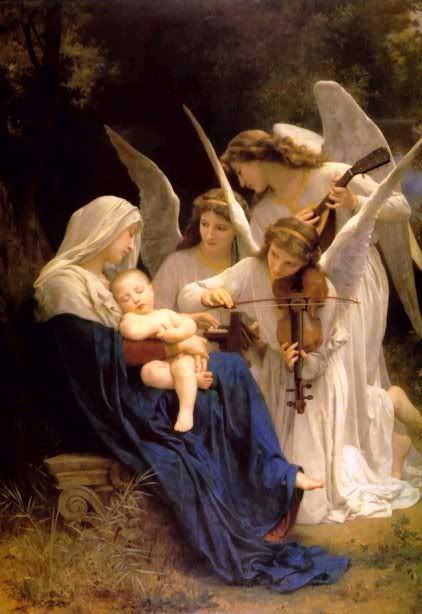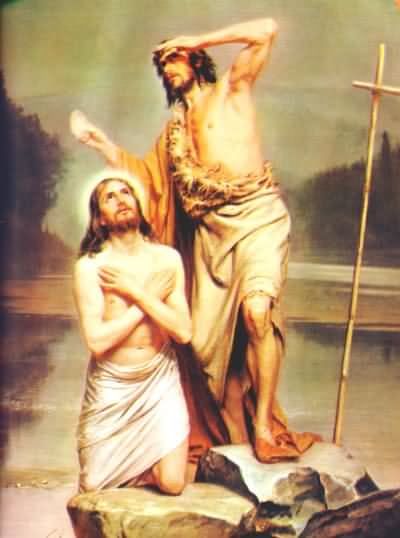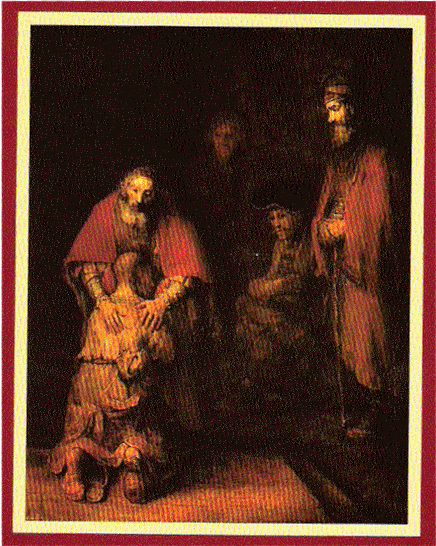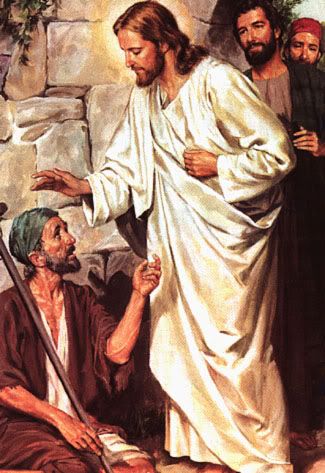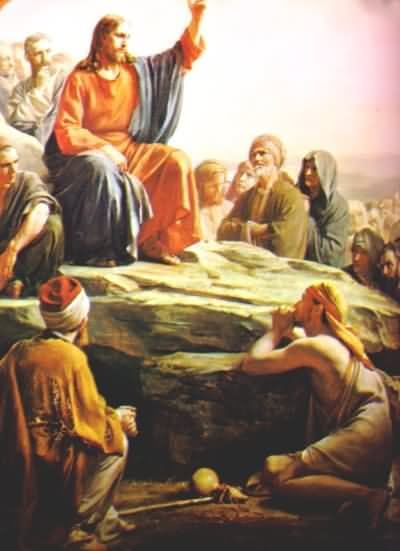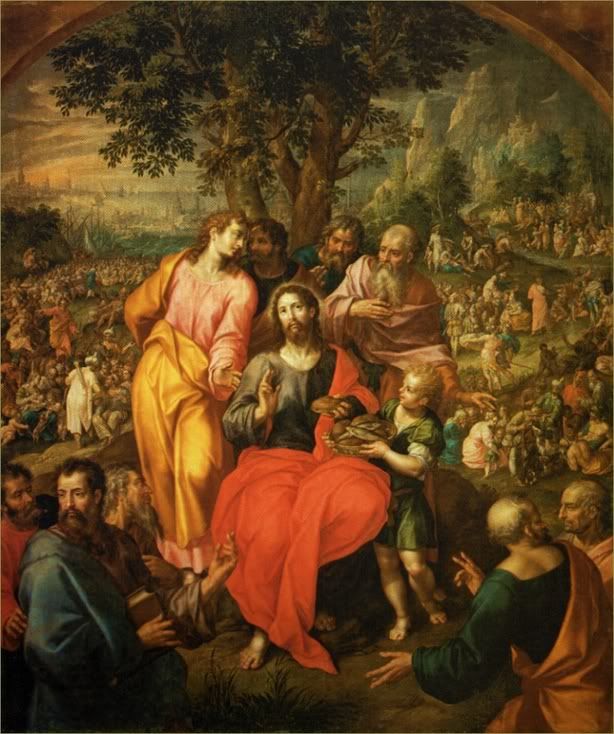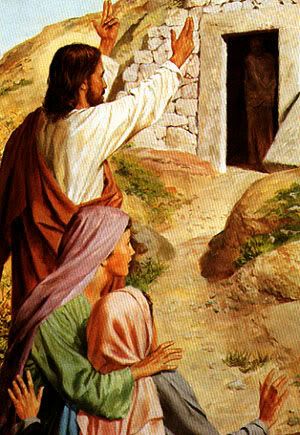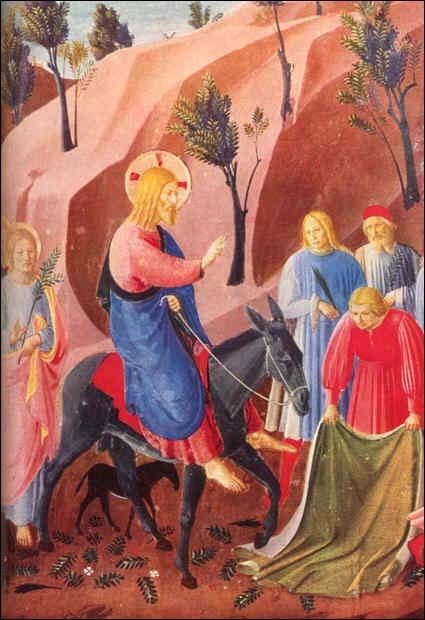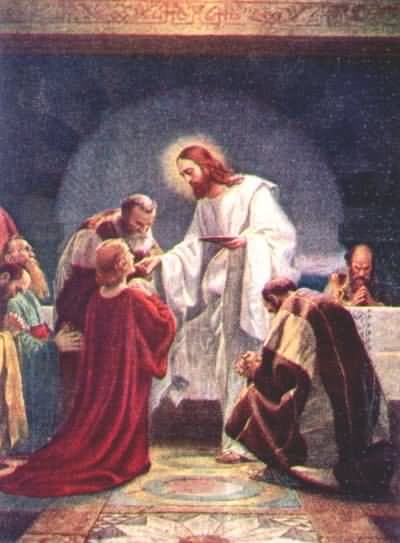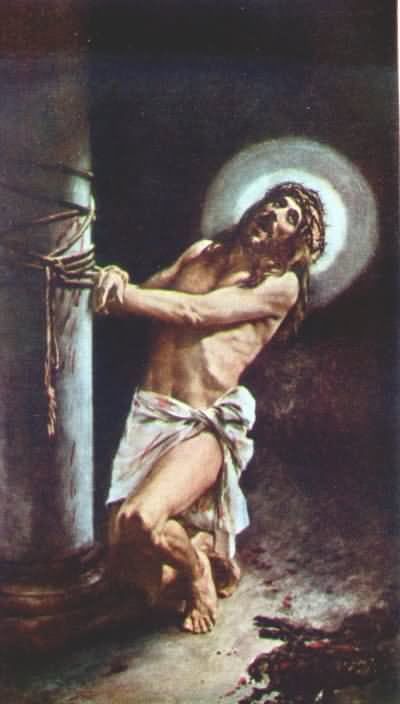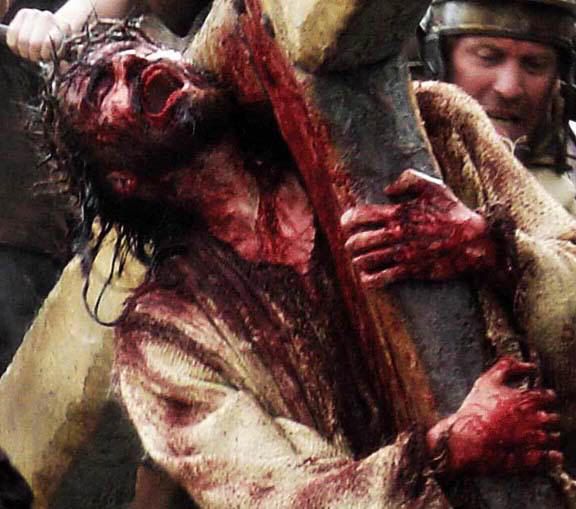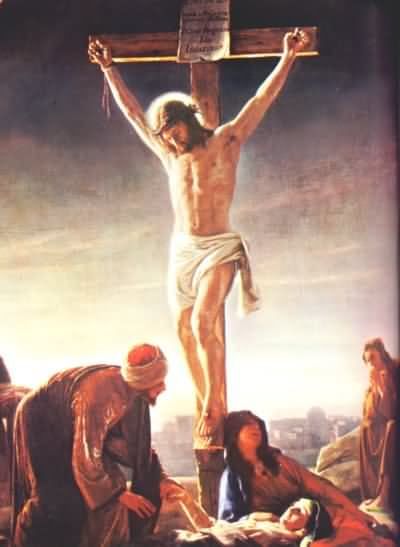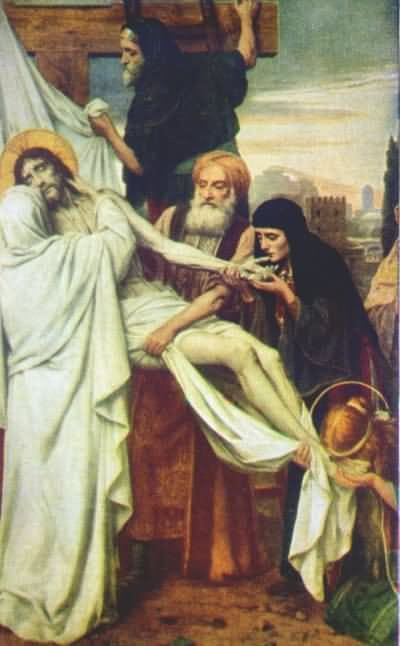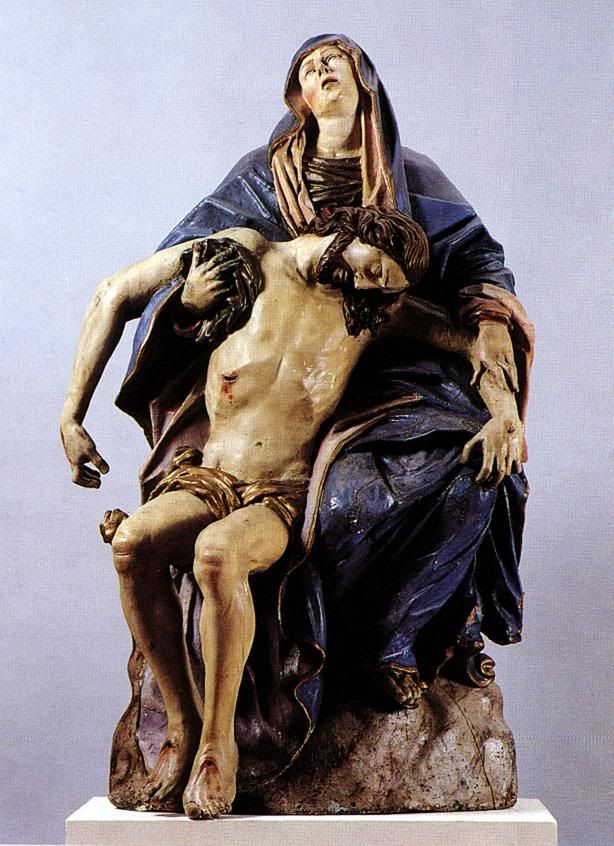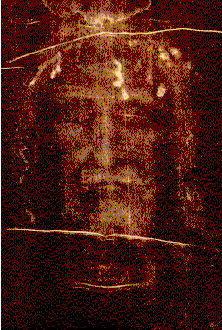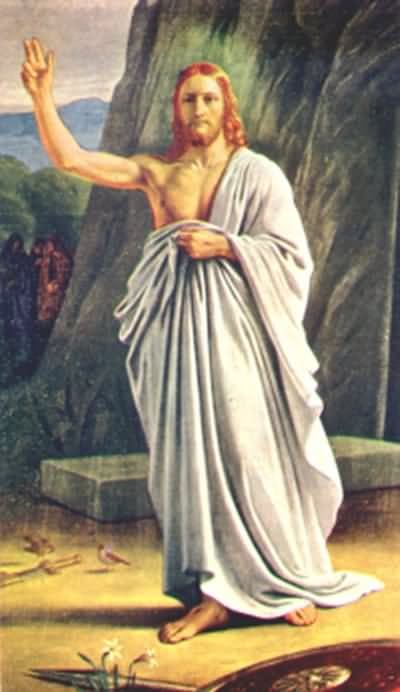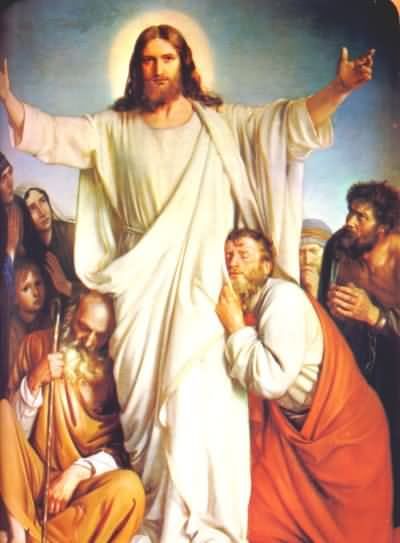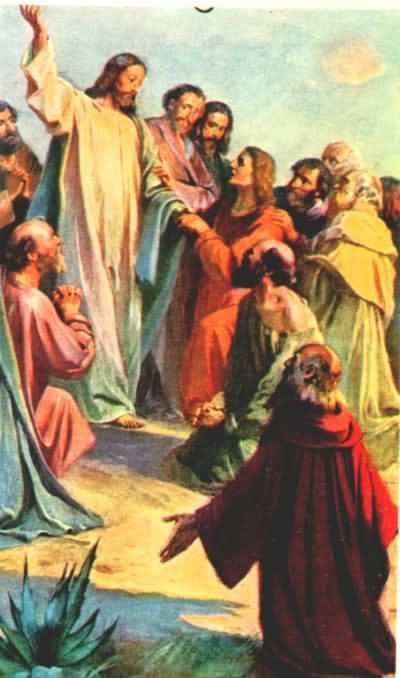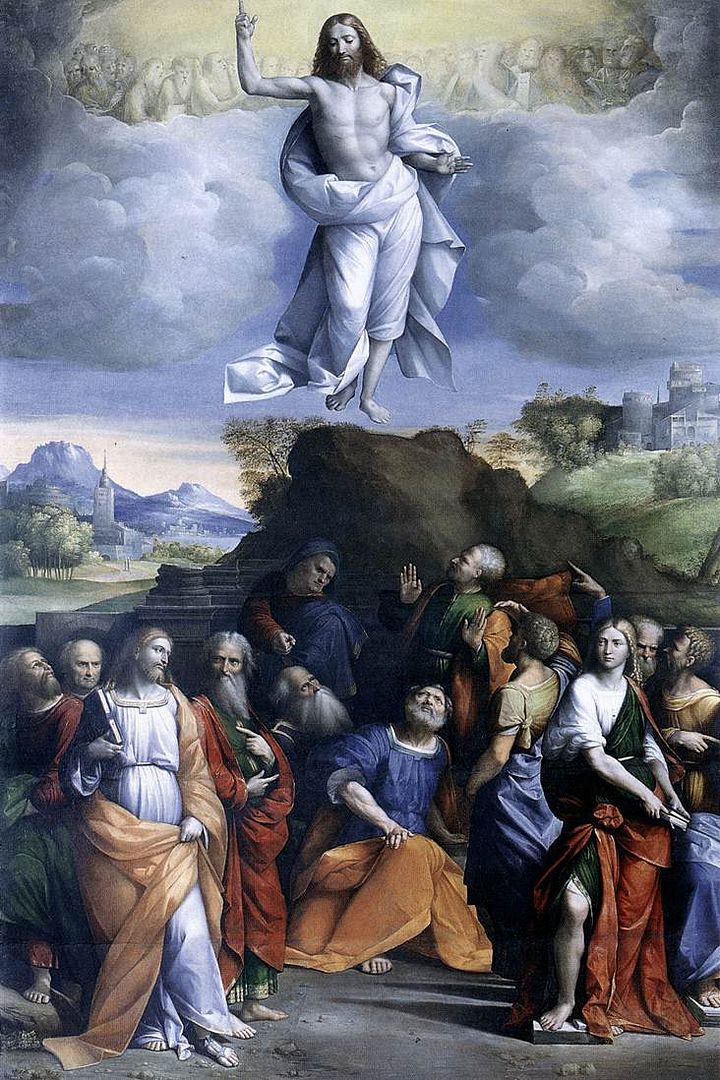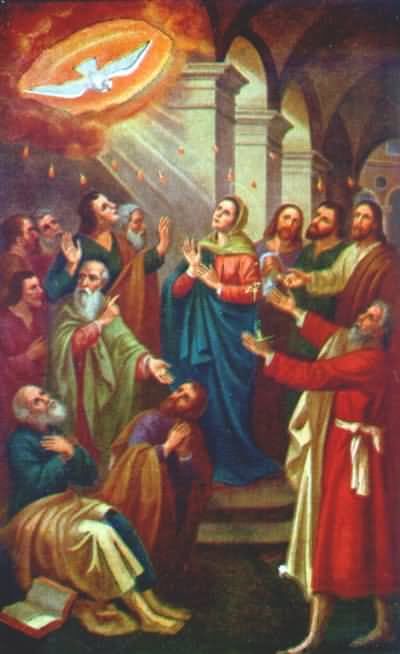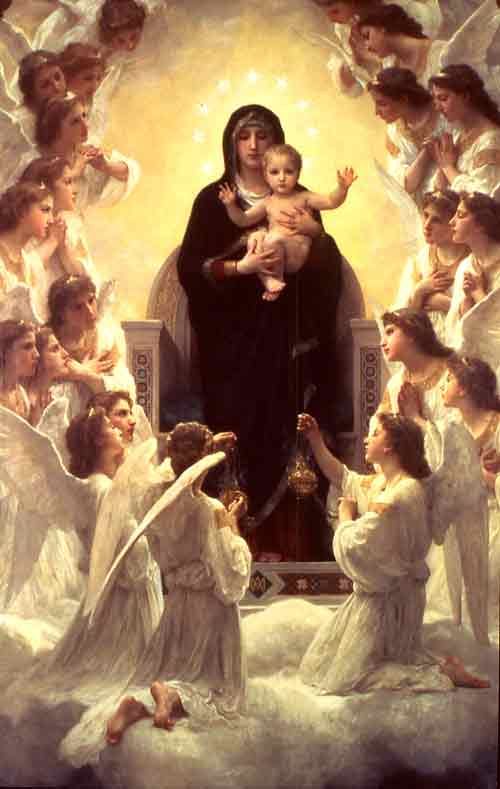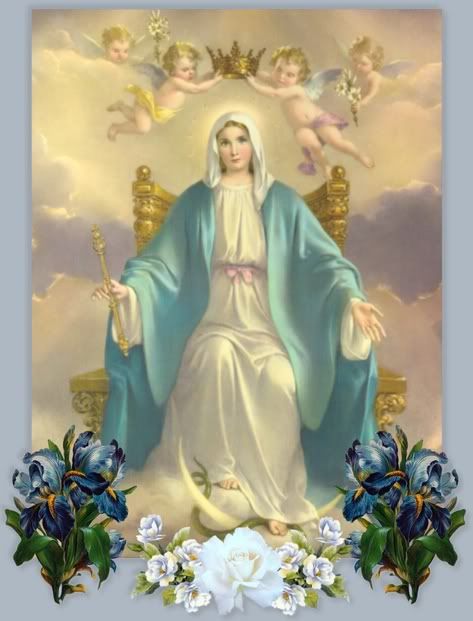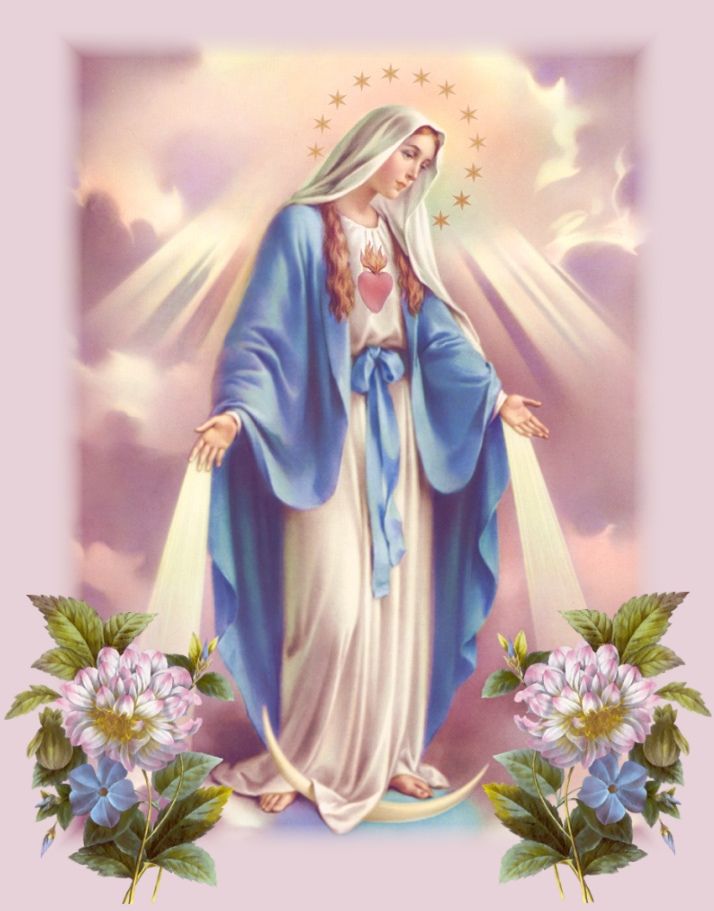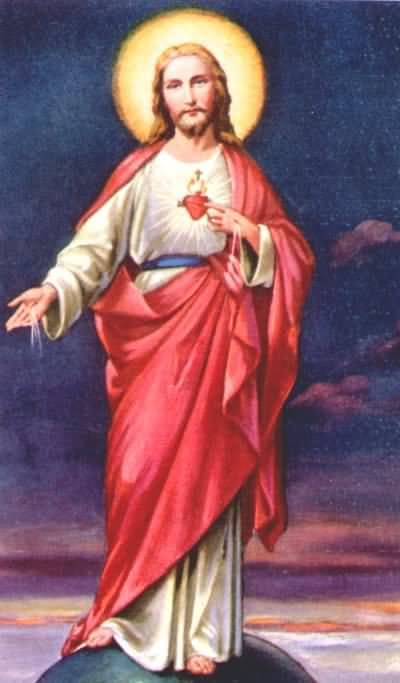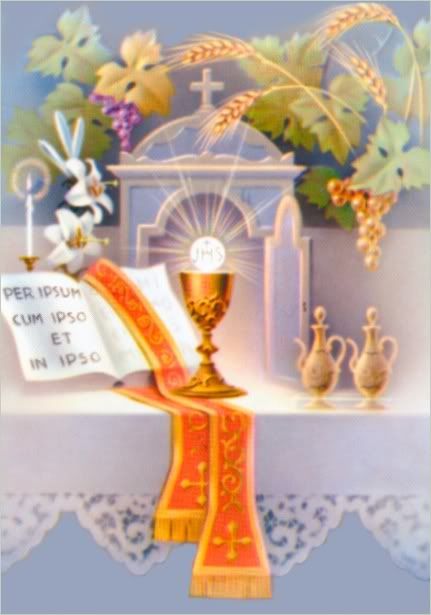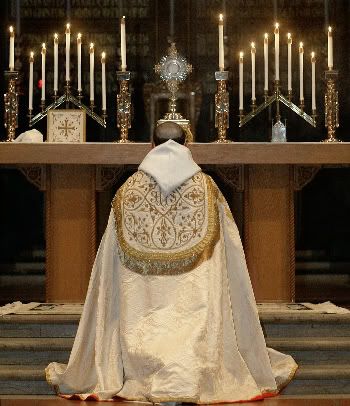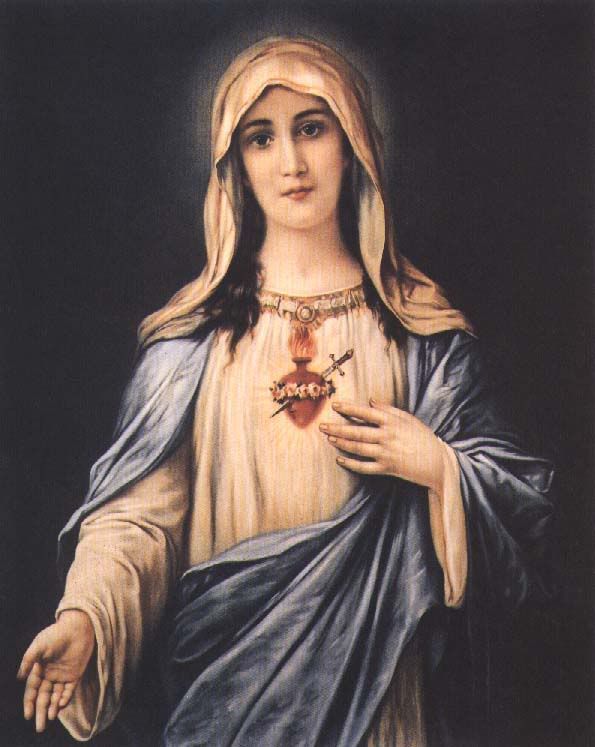Saturday, February 07, 2009
Deposito Of the Alleluia
The season of Septuagesima begins with Vespers this evening. We do not now deserve
To sing the Alleluia forever;
Guilt forces us
To dismiss you, O Alleluia.
For the time approaches in which
We must weep for our sins.
From Father Francis X. Weiser, S.J. (former pastor of Holy Trinity, Boston), Handbook of Christian Feasts and Customs:
The depositio (discontinuance) of the Alleluia on the eve of Septuagesima assumed in medieval times a solemn and emotional note of saying farewell to the beloved song. Despite the fact that Pope Alexander II had ordered a very simple and somber way of "deposing" the Alleluia, a variety of farewell customs prevailed in many countries up to the sixteenth century. They were inspired by the sentiment that Bishop William Duranti (1296) voiced in his commentaries on the Divine Office: "We part from the Alleluia as from a beloved friend, whom we embrace many times and kiss on the mouth, head and hand, before we leave him."
The liturgical office on the eve of Septuagesima was performed in many churches with special solemnity, and alleluias were freely inserted in the sacred text, even to the number of twenty-eight final alleluias in the church of Auxerre in France. This custom also inspired some tender poems that were sung or recited during Vespers in honor of the sacred word. The best known of these hymns is, Alleluia, dulce carmen ("Alleluia, Song of Gladness"), composed by an unknown author of the tenth century. It was translated into English by John Mason Neale (1866) and may be found in the official hymnal of the Protestant Episcopal Church.
In some French churches the custom developed in ancient times of allowing the congregation to take part in the celebration of a quasi-liturgical farewell ceremony. The clergy abstained from any role in this popular service. Choirboys officiated in their stead at what was called "Burial of the Alleluia" performed the Saturday afternoon before Septuagesima Sunday. We find a description of it in the fifteenth-century statute book of the church of Toul:
"On Saturday before Septuagesima Sunday all choir boys gather in the sacristy during the prayer of the None, to prepare for the burial of the Alleluia. After the last Benedicamus [i.e., at the end of the service] they march in procession, with crosses, tapers, holy water and censers; and they carry a coffin, as in a funeral. Thus they proceed through the aisle, moaning and mourning, until they reach the cloister. There they bury the coffin; they sprinkle it with holy water and incense it; whereupon they return to the sacristy by the same way."
In Paris, a straw figure bearing in golden letters the inscription "Alleluia" was carried out of the choir at the end of the service and burned in the church yard.
With the exception of these quaint aberrations, however, the farewell to alleluia in most countries was an appropriate addition to the official ceremonies of the liturgy. The special texts (hymns, responsories, antiphons) used on that occasion were taken mostly from Holy Scripture, and are filled with pious sentiments of devotion....
Thus the Alleluia is sung for the last time and not heard again until it suddenly bursts into glory during the Mass of the Easter Vigil when the celebrant intones this sacred word after the Epistle, repeating it three times, as a jubilant herald of the Resurrection of Christ.
1. Alleluia dulce carmen,
Vox perennis gaudii,
Alleluia laus suavis
Est choris coelestibus,
Quam canunt Dei manentes
In domo per saecula.
2. Alleluia laeta mater
Concivis Jerusalem:
Alleluia vox tuorum
Civium gaudentium:
Exsules nos flere cogunt
Babylonis flumina.
3. Alleluia non meremur
In perenne psallere;
Alleluia vo reatus
Cogit intermittere;
Tempus instat quo peracta
Lugeamus crimina.
4. Unde laudando precamur
Te beata Trinitas,
Ut tuum nobis videre
Pascha des in aethere,
Quo tibi laeti canamus
Alleluia perpetim.
To sing the Alleluia forever;
Guilt forces us
To dismiss you, O Alleluia.
For the time approaches in which
We must weep for our sins.
From Father Francis X. Weiser, S.J. (former pastor of Holy Trinity, Boston), Handbook of Christian Feasts and Customs:
The depositio (discontinuance) of the Alleluia on the eve of Septuagesima assumed in medieval times a solemn and emotional note of saying farewell to the beloved song. Despite the fact that Pope Alexander II had ordered a very simple and somber way of "deposing" the Alleluia, a variety of farewell customs prevailed in many countries up to the sixteenth century. They were inspired by the sentiment that Bishop William Duranti (1296) voiced in his commentaries on the Divine Office: "We part from the Alleluia as from a beloved friend, whom we embrace many times and kiss on the mouth, head and hand, before we leave him."
The liturgical office on the eve of Septuagesima was performed in many churches with special solemnity, and alleluias were freely inserted in the sacred text, even to the number of twenty-eight final alleluias in the church of Auxerre in France. This custom also inspired some tender poems that were sung or recited during Vespers in honor of the sacred word. The best known of these hymns is, Alleluia, dulce carmen ("Alleluia, Song of Gladness"), composed by an unknown author of the tenth century. It was translated into English by John Mason Neale (1866) and may be found in the official hymnal of the Protestant Episcopal Church.
In some French churches the custom developed in ancient times of allowing the congregation to take part in the celebration of a quasi-liturgical farewell ceremony. The clergy abstained from any role in this popular service. Choirboys officiated in their stead at what was called "Burial of the Alleluia" performed the Saturday afternoon before Septuagesima Sunday. We find a description of it in the fifteenth-century statute book of the church of Toul:
"On Saturday before Septuagesima Sunday all choir boys gather in the sacristy during the prayer of the None, to prepare for the burial of the Alleluia. After the last Benedicamus [i.e., at the end of the service] they march in procession, with crosses, tapers, holy water and censers; and they carry a coffin, as in a funeral. Thus they proceed through the aisle, moaning and mourning, until they reach the cloister. There they bury the coffin; they sprinkle it with holy water and incense it; whereupon they return to the sacristy by the same way."
In Paris, a straw figure bearing in golden letters the inscription "Alleluia" was carried out of the choir at the end of the service and burned in the church yard.
With the exception of these quaint aberrations, however, the farewell to alleluia in most countries was an appropriate addition to the official ceremonies of the liturgy. The special texts (hymns, responsories, antiphons) used on that occasion were taken mostly from Holy Scripture, and are filled with pious sentiments of devotion....
Thus the Alleluia is sung for the last time and not heard again until it suddenly bursts into glory during the Mass of the Easter Vigil when the celebrant intones this sacred word after the Epistle, repeating it three times, as a jubilant herald of the Resurrection of Christ.
1. Alleluia dulce carmen,
Vox perennis gaudii,
Alleluia laus suavis
Est choris coelestibus,
Quam canunt Dei manentes
In domo per saecula.
2. Alleluia laeta mater
Concivis Jerusalem:
Alleluia vox tuorum
Civium gaudentium:
Exsules nos flere cogunt
Babylonis flumina.
3. Alleluia non meremur
In perenne psallere;
Alleluia vo reatus
Cogit intermittere;
Tempus instat quo peracta
Lugeamus crimina.
4. Unde laudando precamur
Te beata Trinitas,
Ut tuum nobis videre
Pascha des in aethere,
Quo tibi laeti canamus
Alleluia perpetim.
Labels: Septuagesima
Our Blessed Lady's Saturday
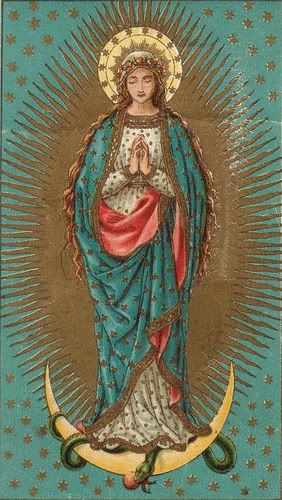
From HIS FAVORITE PRAYERS: St. John Neumann, C.SS.R.
O my Mother Mary, Mother of God, turn not thine eyes from me on account of my sins. I desire to love thee as a little child. I am not worthy that thou shouldst think of me. How can I say that I love thee when my sinful life proves the contrary. I weep but what do such tears as mine avail me. Are they tears of penance? Alas, how insignificant is my penance compared with my sins! O Mother, help me whose sins crucified thy Son.
Amen.
Labels: Our Blessed Lady
Friday, February 06, 2009
Truck Day!
On a lighter note, today, the Red Sox dispatch from Fenway Park the truck loaded with all sorts of baseball equipment to its destination in Fort Myers, Florida.
Pitchers and catchers report for Spring Training in 5 days and 21 hours!!!
So we are at the tail end of a vicious cold snap here in Boston, and the prospect of Spring Training and the Olde Towne Team moving off the hot stove league and into workouts joins the lengthening days in bringing a prospect of hope and joy.
Ah!!! Baseball.
Pitchers and catchers report for Spring Training in 5 days and 21 hours!!!
So we are at the tail end of a vicious cold snap here in Boston, and the prospect of Spring Training and the Olde Towne Team moving off the hot stove league and into workouts joins the lengthening days in bringing a prospect of hope and joy.
Ah!!! Baseball.
Labels: Boston Red Sox
Friday At the Foot Of the Cross
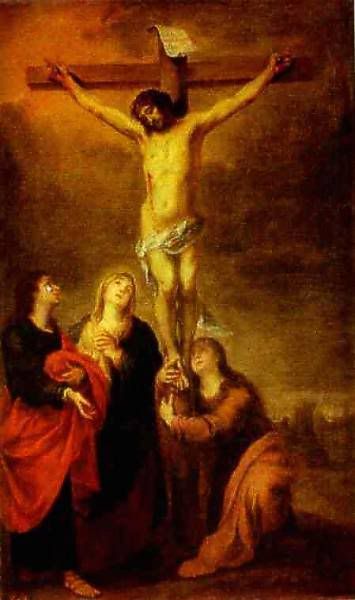
O God, Who for the redemption of the world, wast pleased to be born in a stable and to die upon a cross; O Lord Jesus Christ, by Thy holy sufferings, which we, Thy unworthy servants, call to mind: by Thy Holy Cross, and by Thy death, deliver us from the pains of Hell, and vouchsafe to conduct us whither Thou didst conduct the good thief who was crucified with Thee, Who livest and reignest eternally in Heaven.
Amen.
Labels: Friday At the Foot Of the Cross
Requiescat In Pace
I am late in noting this, as I am in everything these days, but it came to my attention that Michael Dubrieul, the much-esteemed Catholic blogger and author (and husband of Amy Welborn) died very suddenly and unexpectedly this week. He collapsed and died at the gym during his regular morning workout, it appears. This is very shocking to us all, especially since he leaves behind a young family. He was roughly my age, and this really brings "Memento Mori" to the front burner of the mind. I share the distress we all feel at this loss in the Catholic blogging community. I used to link to Michael's blog fairly frequently.
I ask you all to join me in prayers first for Michael's soul, and then for the well-being of Amy and their children.
V. Requiem aeternam dona ei Domine,
R. Et lux perpetua luceat ei.
V. Requiescat in pace.
R. Amen.
I ask you all to join me in prayers first for Michael's soul, and then for the well-being of Amy and their children.
V. Requiem aeternam dona ei Domine,
R. Et lux perpetua luceat ei.
V. Requiescat in pace.
R. Amen.
Labels: Requiescat In Pace
Thursday, February 05, 2009
Saint Agatha
Tuesday, February 03, 2009
Saint Blaise
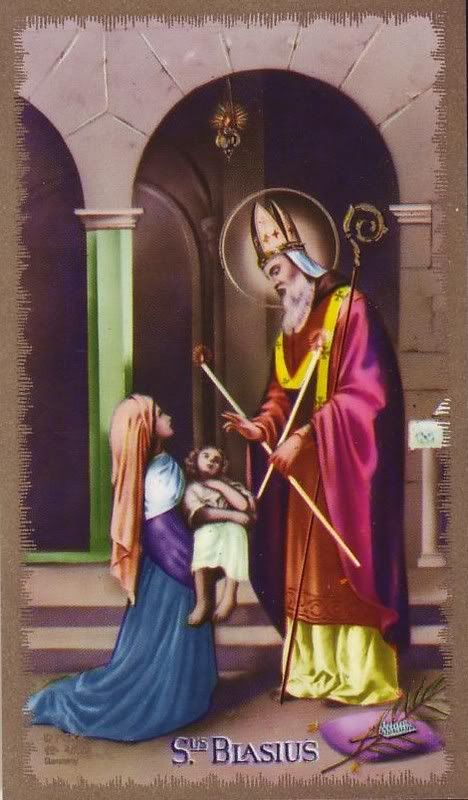
Here is what The Golden Legend has to say about St. Blaise, whose patronage is particularly efficacious for those suffering from disorders of the throat.
St. Blaise, please pray for us!
Labels: Our Saintly Brethern
Monday, February 02, 2009
Groundhog Day 2009
Bad news. Yet again, Punxatawney Phil saw his shadow, which means we are in for 6 or more weeks of additional winter weather.
We have a storm, the intensity of which is still up for debate, closing in on Boston for tonight into Wednesday.
Oh to be some place warm and sunny, but not too hot.
We have a storm, the intensity of which is still up for debate, closing in on Boston for tonight into Wednesday.
Oh to be some place warm and sunny, but not too hot.
Labels: Annual Cycles
Candlemas 2009
Candlemas Day
by Robert Herrick
Kindle the Christmas brand, and then
Till sunset let it burn;
Which quench'd then lay it up again
Till Christmas next return.
Part must be kept wherewith to tend
The Christmas log next year;
And where 'tis safely kept, the fiend
Can do no mischief there.
This poem describes the custom of taking down the last of the Christmas holly on Candlemas, and burning it. It should certainly be dry enough by now.
However, an alternate custom was to reserve the last of the holly and use it as kindling for the fire for the Shrove Tuesday pancakes. This year, that would mean keeping the dried-out holly around almost another 3 weeks.
This is the feast of the Purification of the Virgin, which, under Jewish Law comes 40 days after childbirth. And Candlemas is 40 days after Christmas. The Church also (rather oddly, I think) adds the Feast of the Presentation. Odd, because under Jewish Law, the baby Jesus would have been presented and circumcised on the eighth day after his birth, or the Octave of Christmas. So, there were two Temple-related events after the Nativity, the Presentation on January 1st, and the Purification or Churching of Mary, on February 2nd. The Holy Family must have remained in Bethlehem (though they probably moved out of the stable, as the Magi story speaks of a "house") to be close to Jerusalem and the Temple for these two events. It can only be after this that the Flight to Egypt and the Slaughter of the Holy Innocents took place.
How did Candlemas get its name? Today was the day to bring to church for blessing the year's supply of candles, especially candles with a semi-sacramental nature, like the candles placed in the window on Christmas Eve, Christmas Day, New Years, and Epiphany in Irish homes, candles for the Advent wreath, candles for the home sick visit kit, or candles used in home shrines.
One of the European superstitions connected with Candlemas was that a fair, clear Candlemas meant a longer winter, where a cloudy Candlemas would mean the end of winter was at hand. In Europe, the end of February is often quite spring-like, where here in the US (especially here in New England), it tends to be more wintery, as our seasons run about 3 weeks behind the European seasons.
Here is a German saying:
When it storms and snows on Candlemas Day,
Spring is not far away;
if it's bright and clear,
Spring is not yet near.
This gave rise to the legend that if the groundhog sees his shadow on February 2nd (now better known as Groundhog Day) it means 6 more weeks of winter (as opposed to only 4 more weeks if he does not see it).
Check out our friends at Fish Eaters for more on Candlemas customs.
Also, see The Golden Legend on the Purification of Our Blessed Lady.
by Robert Herrick
Kindle the Christmas brand, and then
Till sunset let it burn;
Which quench'd then lay it up again
Till Christmas next return.
Part must be kept wherewith to tend
The Christmas log next year;
And where 'tis safely kept, the fiend
Can do no mischief there.
This poem describes the custom of taking down the last of the Christmas holly on Candlemas, and burning it. It should certainly be dry enough by now.
However, an alternate custom was to reserve the last of the holly and use it as kindling for the fire for the Shrove Tuesday pancakes. This year, that would mean keeping the dried-out holly around almost another 3 weeks.
This is the feast of the Purification of the Virgin, which, under Jewish Law comes 40 days after childbirth. And Candlemas is 40 days after Christmas. The Church also (rather oddly, I think) adds the Feast of the Presentation. Odd, because under Jewish Law, the baby Jesus would have been presented and circumcised on the eighth day after his birth, or the Octave of Christmas. So, there were two Temple-related events after the Nativity, the Presentation on January 1st, and the Purification or Churching of Mary, on February 2nd. The Holy Family must have remained in Bethlehem (though they probably moved out of the stable, as the Magi story speaks of a "house") to be close to Jerusalem and the Temple for these two events. It can only be after this that the Flight to Egypt and the Slaughter of the Holy Innocents took place.
How did Candlemas get its name? Today was the day to bring to church for blessing the year's supply of candles, especially candles with a semi-sacramental nature, like the candles placed in the window on Christmas Eve, Christmas Day, New Years, and Epiphany in Irish homes, candles for the Advent wreath, candles for the home sick visit kit, or candles used in home shrines.
One of the European superstitions connected with Candlemas was that a fair, clear Candlemas meant a longer winter, where a cloudy Candlemas would mean the end of winter was at hand. In Europe, the end of February is often quite spring-like, where here in the US (especially here in New England), it tends to be more wintery, as our seasons run about 3 weeks behind the European seasons.
Here is a German saying:
When it storms and snows on Candlemas Day,
Spring is not far away;
if it's bright and clear,
Spring is not yet near.
This gave rise to the legend that if the groundhog sees his shadow on February 2nd (now better known as Groundhog Day) it means 6 more weeks of winter (as opposed to only 4 more weeks if he does not see it).
Check out our friends at Fish Eaters for more on Candlemas customs.
Also, see The Golden Legend on the Purification of Our Blessed Lady.
Labels: Our Blessed Lady
Sunday, February 01, 2009
February

Boston's Fanieul Hall in February, with the incredibly ugly, modernist Boston City Hall across the street from it.
1st St. Brigid
2nd Candlemas, Purification of the Blessed Virgin Mother
3rd St. Blaise
5th St. Agatha
6th St. Vaast
7th Bl. Pope Pius IX
8th St. John of Matha
9th Bl. Anna Catherine Emmerich
10th St. Scholastica
11th St. Benedict of Aniane
12th Our Lady of Lourdes, Bl. James Fenn, John Nutter, John Munden, & Thomas Benstead (martyrs)
14th SS. Valentine, SS Cyril and Methodius
16th St. Gilbert of Sempringham & St. Julian of Nicomedia
17th St. Finan of Iona
18th St. Bernadette of Lourdes
23rd St. Peter Damian& St. Milburga
24th St. Matthias
27th Bl. Mark Barkworth and Roger Filcock (martyrs)
28th SS. Gregory II & Hilary (Popes)
The First Friday of February is Friday, February 6th.
The First Saturday of February is Saturday, February 7th.
The month begins in the season after Epiphany. Septuagesima Sunday, is February 8th.
Sexuagesima is February 15th. Quinquagesima Sunday, or Sunday in Shrovetide, is February 22nd. Collop Monday is February 23rd. Shrove Tuesday (Mardi Gras) is February 24th. Ash Wednesday falls on February 25th, ushering in the penitential season of Lent.
The remainder of the month is part of the season of Lent.
There are no embertides in February this year, though the first week in March features the Lenten Embertide.
Our Holy Father Pope Benedict XVI's published prayer intentions for the month of February, 2009:
General:
That the Pastors of the Church may always be docile to the action of the Holy Ghost in their teaching and in their service to God's people.
Mission:
That the Church in Africa may find adequate ways and means to promote reconciliation, justice and peace efficaciously, according to the indications of the Synod of the Bishops’ Special Assembly for Africa.
Labels: First Of the Month Almanac
